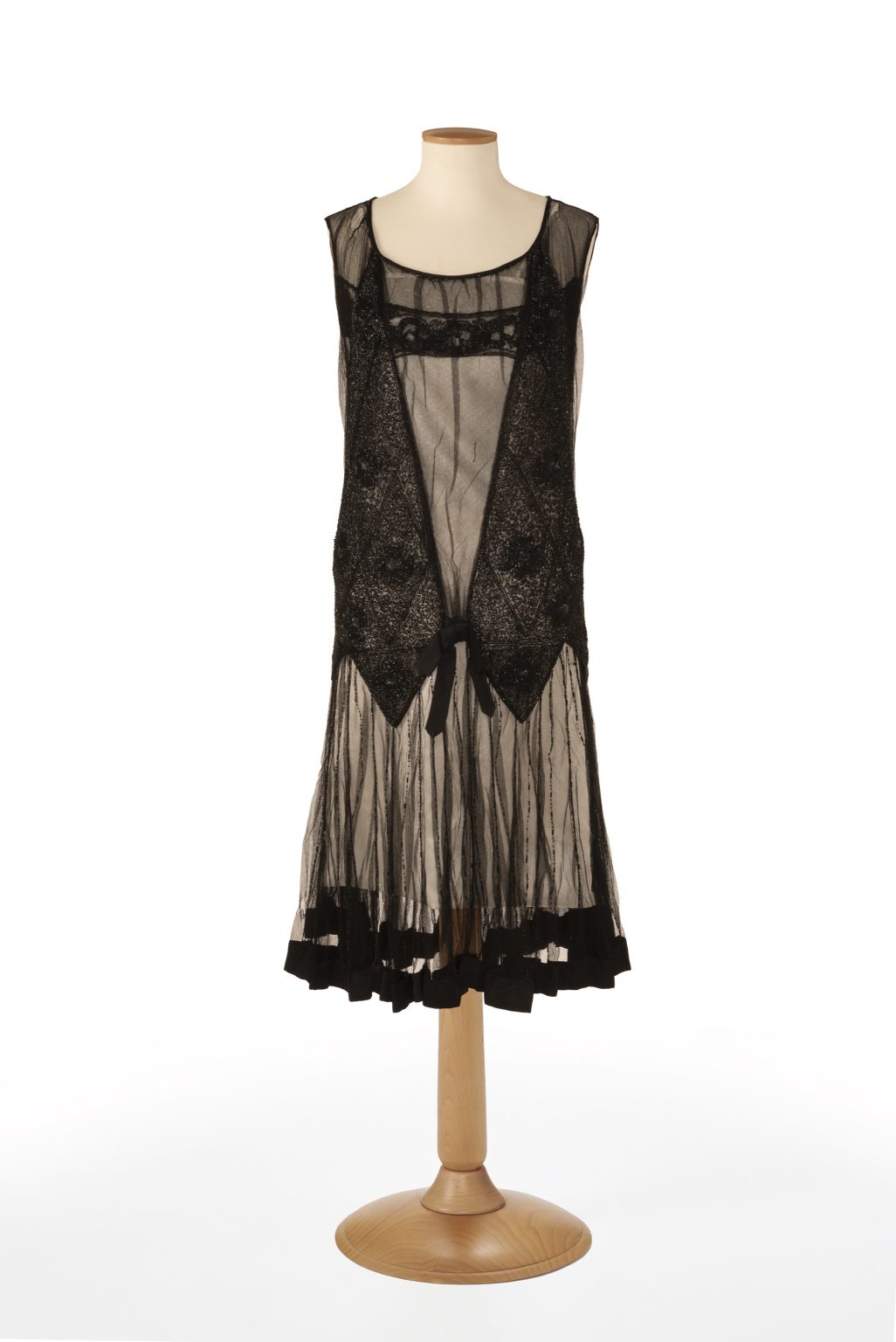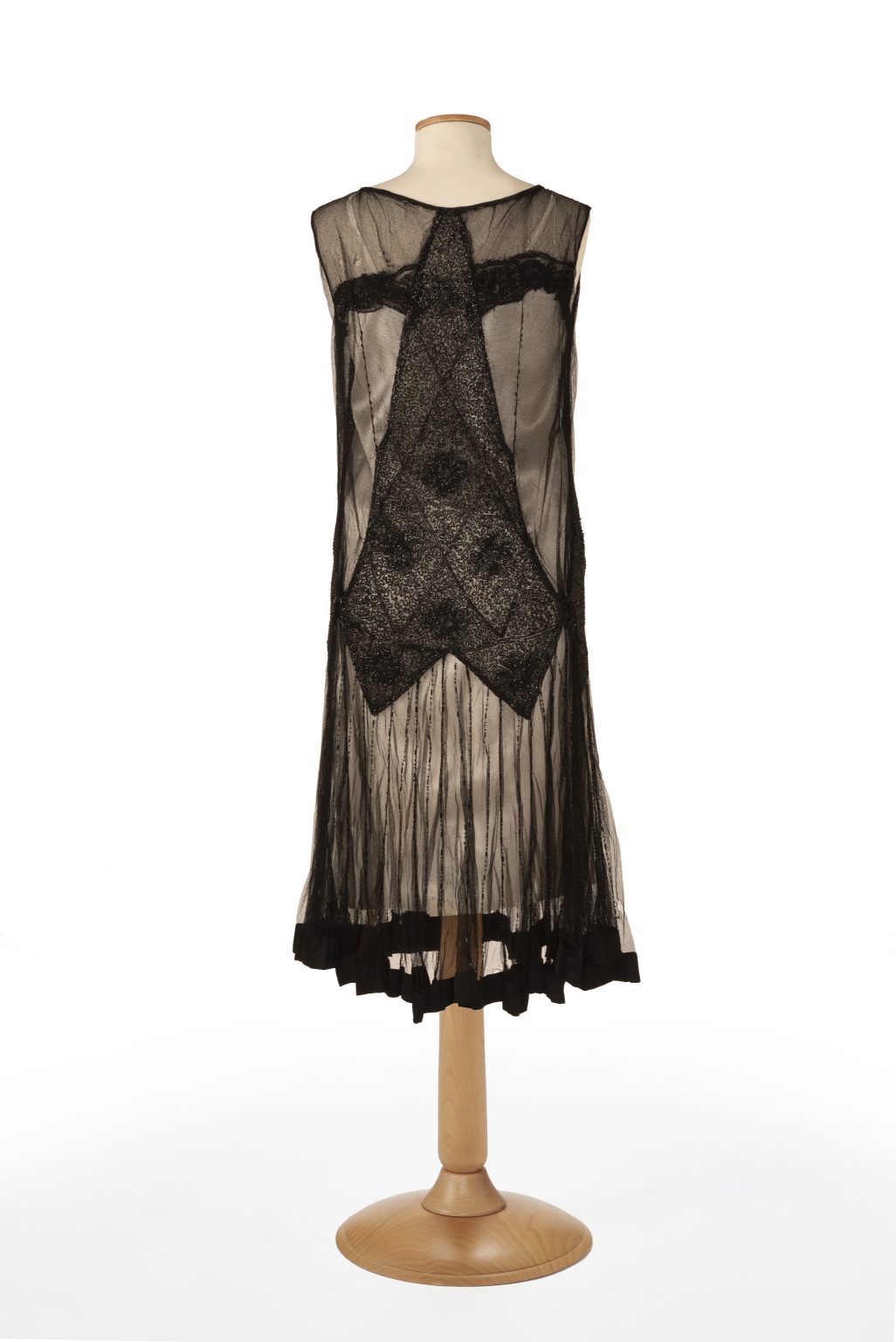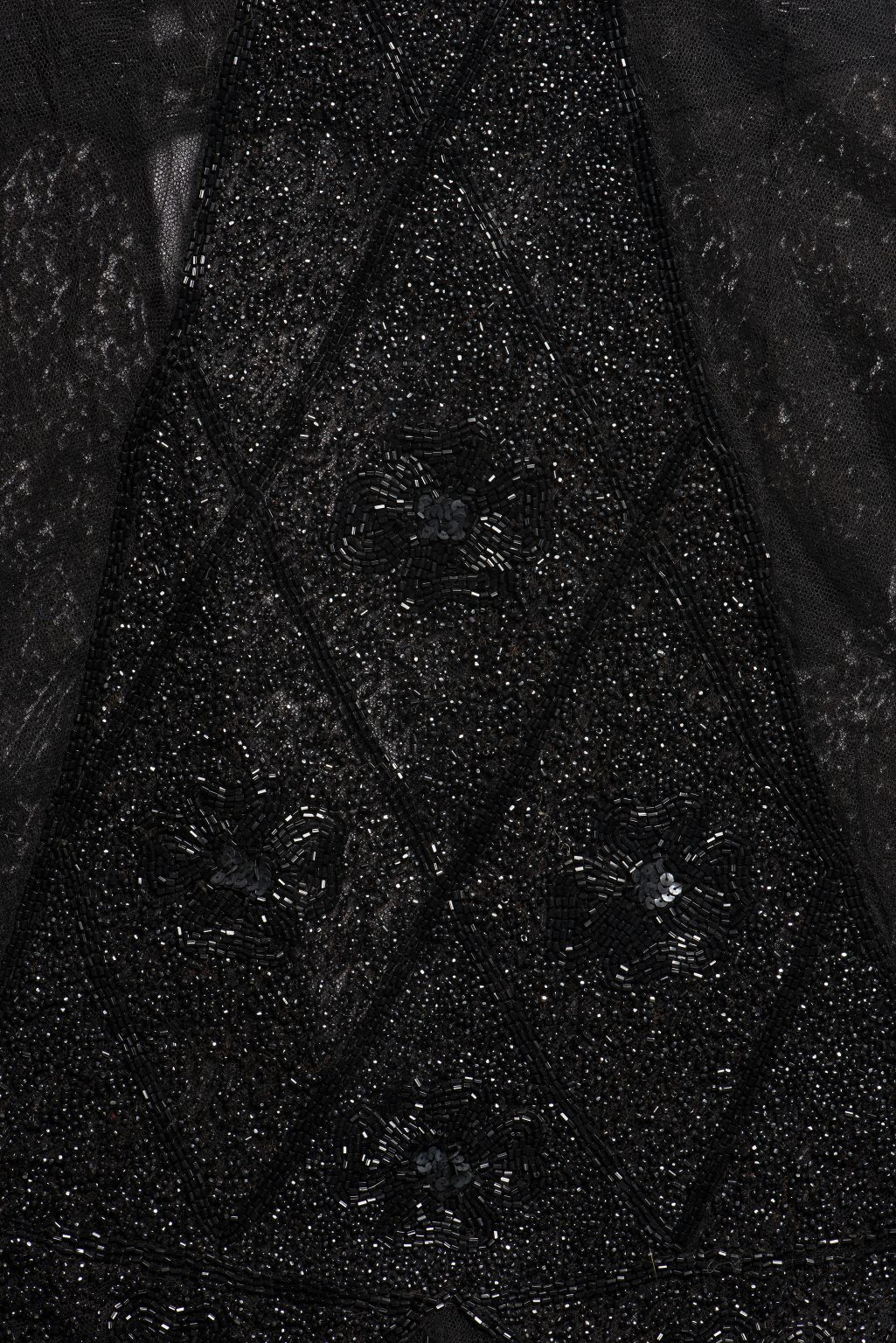
Dress 1925-29 ca.
Sleeveless drop-waisted evening dress in black silk tulle with extensive glass beading and black sequin embroidery, circa 1925-29, Camilla Colombo Collection.
Details


Technical info
Women
The flappers reflected the changes in American society during the war period which had culminated in the achievement of women’s suffrage. This was a of economic prosperity, consumerism and a new morality which F. Scott Fitzgerald recounted in This Side of Paradise and The Beautiful and Damned. The women of the 1920s defied the restrictions imposed on them by
tradition: they worked, travelled, earned a wage, voted, were educated and socially active. The typical flapper was slender with her hair cut in a bob and clothes that hid the waist and provocatively revealed arms and legs. Their masculine appearance led to the flappers being nicknamed garçonne in France and maschiette in Italy. In Italy, the free-living flapper lifestyle was generally condemned as promoting excessive moral permissiveness. Under the Fascist regime, the new American woman was considered foreign, weak, androgynous and sterile, in stark contrast to the traditional image of the Italian woman as healthy, feminine and devoted to motherhood. In 1931, the Italian press was ordered to eliminate all images of women who were too thin or too masculine. Despite this, women's magazines which were less subject to censorship, were full of references to American culture and style. These appealed to Italian women and the trend grew over time.